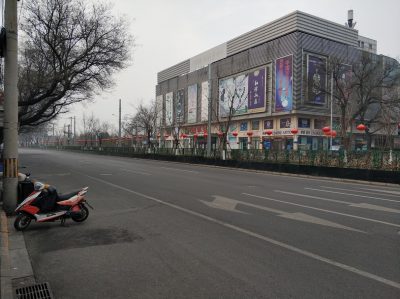What Does Post-COVID19 China Look Like? Mutual US-China Mistrust is the “New Normal”

Beijing is not back to normal but there is an air of normality. The Beijing Subway has 23 lines but only one runs on a north-south axis. This is Line 5, the busiest. In February and March its carriages were almost empty. Now it is running at about 75 per cent of its pre-outbreak capacity.
The capital’s parks are filling up again as families take advantage of the warmer weather. The May day holiday is approaching and picnic spaces are being prepared. Restaurants are opening tentatively with social distancing enforced for diners. Primary schools are also reopening but most secondary schools and universities remain closed until September. The capital was never under lockdown but all residents must have a pass to enter their compound. If you lose it, a new one must be issued before admittance is granted.
And everyone, without exception, is wearing face masks. You cannot use public transport, go into a shop or go to work without one. Temperature checks are ubiquitous. They are carried out swiftly at the entrances to subways, work places, shops or any public gathering. The masks serve another purpose. This is the time of year when millions of catkins take to the air, and pedestrians have to protect their eyes, noses and throats from them. There are pockets of Beijing where COVID-19 has appeared but generally the capital seems to be controlling the outbreak.
Anyone re-entering the city limits must undergo a 14-day quarantine. If this is permitted to be carried out at home, a sticker is put on the apartment door asking neighbors to inform the authorities if quarantine has been broken.
Supermarkets in the capital have remained well-stocked. More than 300,000 tons of pork from the strategic pork reserves were released for the capital’s residents and trucks have been requisitioned to deliver vegetables. As the capital, food shortages for its residents were unthinkable.
The blame game? From China’s point of view, the narrative is clear cut. It made catastrophic mistakes initially. It was slow to recognize the danger posed by COVID-19. It hassled and arrested doctors for warning about it in early January. That same month it allowed a massive Lunar new year’s public banquet for 40,000 families to take place. And as it became clear that an epidemic was raging, politics took precedence as the local party congresses in Wuhan and in Hubei province were being held in January prior to the (postponed) national congress in March.
Even when it announced the Wuhan lockdown, it did not implement it until five hours later allowing people, many presumably infected, to leave the city. But then it acted with resolve. Locking down Wuhan, a city of 11 million people, telling most of the country’s workers to stay at home, shutting schools and universities, cutting air links, introducing national temperature checks, and home passes. These and other measures allowed it to find a route to recovery and gave the rest of the world a precious window of opportunity. This, again, in China’s view, was squandered. Despite the evidence from China, the rest of the world seemed reluctant to face reality. Italy, Span and Germany seemed to understand the peril but Japan, Britain and the United States adopted an almost laissez-faire mentality. And US President Donald Trump’s remark that COVID-19 could be treated by people injecting disinfectant seemed to confirm China’s worst fears: The lessons it painfully learned were being willfully ignored.
Even if a vaccine is developed relative quickly, say by September, COVID-19 will change the world.
There will be political consequences. Mutual mistrust between China and the West is the new norm. And in China, the unwritten law that has shaped that country’s and the world’s fortune over the last 30 years seems to have been broken. That law states that China will deliver its citizens economic growth at the cost of political rights. Before COVID-19 the Chinese economy, according to Beijing, was growing at about 6 per cent per annum. This year it is estimated to grow at about 2.5 per cent. Pre-COVID, any growth less that 5 percent was considered a recipe for massive social upheaval. The consequences of this outbreak will be felt long after the face masks in Beijing are discarded and the temperature checks stopped.
*
Note to readers: please click the share buttons above or below. Forward this article to your email lists. Crosspost on your blog site, internet forums. etc.
Reporting from Beijing Tom Clifford is a frequent contributor to Global Research.
Featured image is from Wikimedia Commons

